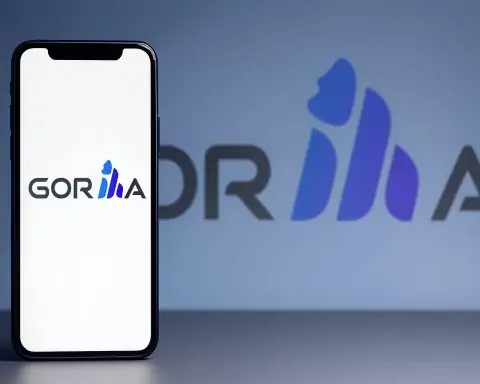- Autonomix Medical released a post‑hoc subgroup analysis from its first‑in‑human PoC 1 study in severe pancreatic cancer pain, showing 20–30‑point gains in quality‑of‑life scores at 3 months, above widely used thresholds for clinically meaningful change. [1]
- Even Stage 4 metastatic patients experienced durable improvements in symptoms, daily functioning and overall quality of life after targeted nerve ablation. [2]
- On the news, AMIX shares nearly doubled intraday, trading around the mid‑$1 range on volumes tens of times above normal, making it one of Nasdaq’s top gainers today. [3]
- The data will help shape a U.S. multicenter clinical trial planned for 2026, where pain relief and quality‑of‑life outcomes are expected to be formal endpoints. [4]
- Autonomix remains a pre‑revenue, development‑stage micro‑cap with ongoing net losses and heavy volatility, so today’s move comes with significant risk. [5]
All of today’s Autonomix (AMIX) news in one glance – 17 November 2025
As of this afternoon on November 17, 2025, all company‑specific news about Autonomix Medical, Inc. (NASDAQ: AMIX) centers on the same core development: new quality‑of‑life data from its pancreatic cancer PoC 1 study and the stock’s reaction to it.
The main headlines are:
- Official company press release – Autonomix publishes a GlobeNewswire release detailing a post‑hoc exploratory subgroup analysis from its PoC 1 study in severe pancreatic cancer pain, focused on EORTC QLQ‑C30 quality‑of‑life outcomes. [6]
- Yahoo Finance reprint – Yahoo carries the same GlobeNewswire release under its news feed for AMIX, amplifying distribution to retail investors. [7]
- StockTitan summary – A recap highlights that Autonomix reported sustained, clinically meaningful quality‑of‑life gains after transvascular nerve ablation, including late‑stage patients. [8]
- Investing.com quality‑of‑life article – Investing.com runs a company‑news piece summarizing the subgroup analysis and reiterating that the results exceeded EORTC benchmarks for clinically meaningful change, while noting the company’s expanding patent portfolio. [9]
- Investing.com / Reuters market piece – A separate stock‑market story notes that Autonomix shares are soaring after the new cancer pain data, with the move tied to the fresh PoC 1 quality‑of‑life results. [10]
- GuruFocus analysis – GuruFocus frames the announcement as promising medical data but high‑risk equity, highlighting both the clinical upside and Autonomix’s negative earnings and volatility. [11]
No additional Autonomix‑specific earnings reports, SEC filings or separate product announcements have been released today beyond coverage of this PoC 1 subgroup analysis and its market impact, based on public news and filings available at the time of writing. [12]
What Autonomix announced today
Autonomix is developing catheter‑based, nerve‑targeted therapies intended to treat diseases of the peripheral nervous system, starting with severe pain in pancreatic cancer. Its PoC 1 trial enrolled 20 patients with unresectable pancreatic cancer and severe abdominal pain, using transvascular radiofrequency (RF) ablation to target nerves around the celiac plexus. [13]
The company had previously reported that, among patients who responded to treatment (primarily those treated via femoral access), the procedure produced:
- Rapid pain relief within 24 hours
- Roughly 60–66% average pain reduction at 4–6 weeks and 3 months
- 100% opioid‑free status in responders by 7 days and again at 3 months, with most remaining opioid‑free at 4–6 weeks [14]
The new element today is a more granular look at patient‑reported quality of life, using the validated EORTC QLQ‑C30 questionnaire and splitting patients into subgroups (e.g., by tumor stage and metastatic status). [15]
Key numbers from the post‑hoc subgroup analysis
According to the GlobeNewswire release: [16]
- All responders (overall subgroup)
- Symptom scores improved by about 14.5 points at 4–6 weeks and 26.1 points at 3 months.
- Functional scores increased by roughly 8.2 points at 4–6 weeks and 25.6 points at 3 months.
- Global quality‑of‑life scores rose by around 8.3 points at 4–6 weeks and 18.1 points at 3 months.
- All 3‑month results exceeded the ≥10‑point threshold often used in EORTC QLQ‑C30 analyses to mark a clinically meaningful change.
- Stage 4, distant metastatic subgroup
- Symptom improvement of about 32.5 points at 4–6 weeks and 29.5 points at 3 months.
- Functional gains around 11.9 points at 4–6 weeks and 25.6 points at 3 months.
- Global quality‑of‑life improvements of roughly 19.4 points at 4–6 weeks and 25 points at 3 months.
Across timepoints, these changes are well above commonly cited clinical‑meaningfulness thresholds, especially striking in late‑stage metastatic patients, who typically experience rapid deterioration rather than measurable functional and quality‑of‑life gains.
Autonomix stresses that this is a retrospective, post‑hoc analysis in a small dataset (e.g., 6 responders at the 3‑month mark), and therefore hypothesis‑generating rather than definitive. The company says the findings will be used to refine patient selection, procedural technique (e.g., preferred vascular access) and endpoints for an upcoming U.S. multicenter trial slated to begin in 2026. [17]
Why these quality‑of‑life data matter
Pancreatic cancer is notorious not only for its poor survival but also for debilitating pain and functional decline. Current options often rely on high‑dose opioids or ethanol celiac plexus neurolysis, both of which can have serious side effects and may offer incomplete or short‑lived relief. [18]
In that context, Autonomix is trying to show that precision nerve ablation delivered via the vasculature can:
- Rapidly reduce pain
- Allow tapering or elimination of opioids
- Improve daily function and overall well‑being
Today’s analysis addresses point (3) more directly than prior readouts. Quality‑of‑life metrics are particularly important because:
- Regulatory agencies and payers increasingly expect patient‑reported outcomes alongside measures like pain scores.
- In palliative oncology settings, quality of life is often the primary goal, especially when life expectancy is limited.
However, there are meaningful caveats:
- The analysis is post‑hoc, not pre‑specified in the original trial design.
- Sample sizes are very small at later timepoints, as many patients succumb to their disease or cannot travel for follow‑up. [19]
- The study lacks a randomized control arm, making it difficult to fully separate treatment effects from placebo or natural disease variation.
For now, the data are best viewed as encouraging early signals that justify moving into larger, controlled studies rather than as definitive proof of clinical benefit.
Based on real‑time market data and several tracking services:
- Around early‑to‑mid‑afternoon trading, AMIX last traded near $1.46, up roughly $0.73 from a prior close around $0.73 – a gain of about 100.8% intraday.
- Trading volume has exploded into the tens of millions of shares, versus an average daily volume under 1 million shares reported by multiple data providers. [20]
- StockAnalysis and other platforms list Autonomix among the top gainers on Nasdaq today, with intraday performance in the 90–100% range depending on time of snapshot. [21]
- The company’s market capitalization now sits in the mid‑single‑digit to high‑single‑digit millions of dollars, reflecting both the small size of the float and the sharp price swing. [22]
Pre‑market and early regular‑session trading already showed strong momentum:
- ChartMill and StockAnalysis both flagged AMIX as a pre‑market mover, with gains of roughly 35–45% before the opening bell. [23]
For traders, this is a classic micro‑cap biotech spike driven by a single news event. For longer‑term investors, the move highlights both the potential upside if the technology succeeds and the extreme volatility inherent in small, loss‑making health‑tech names.
How Autonomix’s technology works – and what was (and wasn’t) used in PoC 1
Autonomix describes its platform as a kind of “GPS for the nervous system”: a catheter‑based system designed to sense, map, ablate and then verify nerve activity in real time. [24]
Key elements of the platform include: [25]
- A microchip‑enabled sensing array that can be delivered via catheter into blood vessels (“vascular highway”) near target nerves.
- Ultra‑high‑sensitivity electronics intended to detect and differentiate neural signals associated with pain or disease.
- The ability to deliver targeted RF energy through the vessel wall to ablate nerves while using live feedback to confirm loss of nerve signaling.
- A broad IP portfolio with 120+ issued or pending patents worldwide across multiple “families” of technology.
In January 2025, Autonomix announced that it had achieved “design lock” for its ASIC microchip, following in vivo and bench testing, a key step toward incorporating its full sensing capability into human studies. [26]
However, it’s important to note that PoC 1 did not yet use this proprietary sensing catheter. The current PoC 1 study used commercially available catheters to deliver RF ablation; the sensing array will be evaluated in future trials. [27]
That means:
- Today’s results primarily validate the effect of targeted transvascular ablation in pancreatic cancer pain.
- The full promise of Autonomix’s “sense–map–treat–verify” platform remains to be tested in humans.
2025 milestones: patents, trials and capital
Beyond today’s news, Autonomix has been busy in 2025. Notable developments include:
- ASIC microchip design lock (Jan 17, 2025) – Finalization of the design for the company’s custom integrated circuit, aimed at enabling highly sensitive, on‑chip signal processing for nerve sensing. [28]
- New U.S. patent on broadly applicable nerve‑focused treatments (July 21, 2025) – The company announced another U.S. patent covering minimally invasive, nerve‑focused treatments across high‑need indications such as cardiovascular and renal disease, expanding its IP coverage. [29]
- $2.5 million in warrant exercises (July 22, 2025) – Autonomix disclosed agreements for immediate exercise or prepayment of certain outstanding warrants, generating $2.5 million in gross proceeds and providing additional runway. [30]
- Cardiac neuromodulation patent (Oct 9, 2025) – A key U.S. patent (No. 12,369,852) was issued for precision nerve‑targeted therapies in cardiology, covering systems that sense autonomic signals, map targets and deliver closed‑loop therapy to cardiac tissues. [31]
- New European patent for catheter‑based technology (Oct 17, 2025) – Autonomix received a European patent expanding protection for its first‑in‑class catheter platform, growing its global estate to dozens of issued patents. [32]
- High‑profile conference visibility (Oct 2025) – The company featured its platform in podium presentations at the TCT interventional cardiology conference and at the Maxim Growth Summit, signaling an effort to build awareness among both clinicians and investors. [33]
Autonomix is also conducting or planning:
- PoC 2 expansion phase, targeting additional visceral cancers (e.g., gallbladder, liver, bile duct) that transmit pain via the celiac plexus. [34]
- A Good Laboratory Practice (GLP) study for its sensing and RF ablation system, referenced in recent filings and market coverage, which supports eventual regulatory submissions. [35]
Together, these steps are meant to pave the way toward a U.S. multicenter pivotal‑style trial and, eventually, a de novo FDA submission, a path the company first outlined in 2024 and appears to be refining as more data come in. [36]
Financial snapshot and risk profile
Autonomix is still firmly in development‑stage territory:
- The company generated no meaningful product revenue as of its latest filings; its focus is on R&D and clinical development. [37]
- For the quarter ended September 30, 2025, Autonomix reported a net loss of about $7.45 million, up from roughly $2.81 million in the same period a year earlier, reflecting stepped‑up R&D and public‑company costs. [38]
- Earlier disclosures for fiscal year 2024 showed net losses of $15.4 million and indicated that cash at that time only funded operations into early 2025, prompting subsequent capital‑raising steps such as the July 2025 warrant exercises. [39]
- MarketBeat and other data providers list negative earnings per share, a price‑to‑book ratio well under 1 and short interest in the low‑single‑digit percentage range, typical of small, speculative medtech names. [40]
On the balance sheet and market‑structure side:
- Autonomix has a very small float and market cap (around $5–8 million, depending on the exact share count and intraday price), which amplifies both upside and downside moves. [41]
- The stock’s 52‑week range stretches from under $1 to well above $10, underscoring extreme historical volatility. [42]
In short, the clinical story may be strengthening, but the equity remains high risk, highly sensitive to any success or setback in trials, financing, or exchange‑listing status.
What to watch next
For readers following AMIX or the pancreatic cancer pain space, the next checkpoints to keep on the radar include:
- Detailed protocol and site selection for the planned U.S. multicenter trial
- Expect more information on trial design, endpoints (including which QLQ‑C30 domains are primary/secondary), and timing as Autonomix incorporates today’s subgroup insights. [43]
- Progress in PoC 2 and GLP studies
- Additional PoC 2 readouts across other visceral cancers and results from GLP testing of the combined sensing/ablation system will help validate the platform beyond the initial PoC 1 cohort. [44]
- Regulatory and listing developments
- Given its size and historical Nasdaq notices, investors will be watching for any updates on continued listing compliance or capital‑markets transactions that could alter the share count or cash runway. [45]
- Financing activity
- Further raises (equity, warrants, or other structures) are likely as Autonomix funds larger trials; these can be both a lifeline and a source of dilution. [46]
Important disclaimer
This article is for informational and educational purposes only and is not investment advice or a recommendation to buy, sell or hold any security. Autonomix Medical, Inc. is a micro‑cap, development‑stage medical device company whose shares can be extremely volatile and speculative. Always perform your own due diligence and consider consulting a licensed financial professional before making investment decisions.
References
1. www.globenewswire.com, 2. www.globenewswire.com, 3. stockanalysis.com, 4. www.globenewswire.com, 5. stockanalysis.com, 6. www.globenewswire.com, 7. finance.yahoo.com, 8. www.stocktitan.net, 9. ca.investing.com, 10. www.investing.com, 11. www.gurufocus.com, 12. last10k.com, 13. www.globenewswire.com, 14. www.globenewswire.com, 15. www.globenewswire.com, 16. www.globenewswire.com, 17. www.globenewswire.com, 18. www.autonomix.com, 19. www.globenewswire.com, 20. www.marketbeat.com, 21. stockanalysis.com, 22. www.marketbeat.com, 23. www.chartmill.com, 24. www.autonomix.com, 25. www.autonomix.com, 26. www.quiverquant.com, 27. www.globenewswire.com, 28. www.nasdaq.com, 29. ir.autonomix.com, 30. ir.autonomix.com, 31. ir.autonomix.com, 32. www.otcmarkets.com, 33. www.globenewswire.com, 34. www.globenewswire.com, 35. www.publicnow.com, 36. ir.autonomix.com, 37. ir.autonomix.com, 38. www.marketscreener.com, 39. ir.autonomix.com, 40. www.marketbeat.com, 41. www.marketbeat.com, 42. www.marketbeat.com, 43. www.globenewswire.com, 44. www.autonomix.com, 45. www.investing.com, 46. ir.autonomix.com










